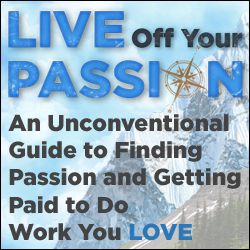A few years ago, in a conversation with one of my mentors, I explained that I was dealing with a particular problem that was weighing heavily on my mind.
As I described the situation, he listened intently, seeking to understand what I was saying. Then he said something that absolutely took me by surprise. I was expecting empathy, sympathy, and possible solutions. Instead, he said:
“Who says your problem’s a problem?”
I replied, “What do you mean? I just told you the situation. Of course it’s a problem, and I’ve got to figure out what to do.”
He went on to explain, “Yes, I understand you have a situation here that you’re dealing with. But who says that it is a problem? With every problem, there is an opportunity. And I believe you really have a big opportunity here to explore and make the most of, instead of a problem to manage. That is, if you choose to see it that way.”
Next, he helped me look at my situation from different angles and perspectives. Then he shared some possible courses of action that I could take, and the potential results of those decisions…both in the short-term and a few years down the road.
One thing I noticed was that some solutions, which seem to have the lowest cost right now, have higher costs down the road. And I’m not just talking money, but also our energy, emotions, relationships, goals, etc.
Later, when our conversation came to a close, I thanked my mentor for helping me gain a new perspective on my situation. He gave me some real hope for what I thought was more of a hopeless situation. As he left, he gave me another pearl of wisdom that took a minute to sink in…but once I got it, I got it. He said:
“Sometimes, how you look at a problem is the problem.”
The next time you’re stumped by a problem or situation, and you just don’t know what to do, you might give these tips a try:
- Gain a new perspective by looking at the problem from different angles.
- Make a list of all the ways you could possibly benefit from this situation.
- Pretend that you are a coach who is helping someone else in this situation. What would you advise them to do?
- Pick your top three possible courses of action, then count the cost of each one, both in the short-term and long-term. Play them out in your mind. If you went this direction, how would it feel at first? How does it feel a month or six months down the road? What are the ramifications, both good and bad? Can you live with them?
- Then pick your top possible solution, and ask yourself: “If I go this route, does it really address the real problem?” This is an important question, because it is all too easy to deceive ourselves into thinking we’re doing the right thing to address the problem, but then our choices results in unintended negative consequences. Don’t believe me? Just ask Congress.




Speak Your Mind